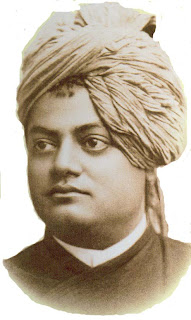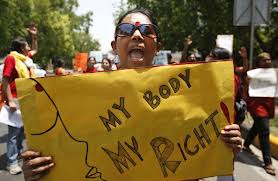Universal declaration of human right,
1948
 |
Human Right
|
The united
nation from very day of its inception from 1945 till date worked to secure
women’s legal equality. The united nation has choked out a comprehensive
programme by means of various conventions to uplift and develop the status of
women in education, political, economical including the position in social life.
With formation of commission on human right and commission on then status of
women in 1946 and the adoption of universal declaration of human right 1948. The united nation has also undertaken a
massive research study to access the position and status of women throughout
the world. It was found that in many part of the world the women have
constantly denied equality in law and also in practice. They are compelled to
live under male dominated world and are subjected to variety of discrimination
and humiliation. As a result the united nation has incorporated a series of
treaties and conventions to achieve the equal legal and political status of women
throughout the world.
It is
pertinent to briefly discuss the achievement of United Nation in the field of women
right since 1948. These are:-
1. 1.Universal declaration of human right,
1948;
2. 2.Convention on the political right of women,
1953;
3. 3.Convention on nationality of married
women, 1957;
4. 4.Declaration on elimination of
discrimination against women, 1967;
5. 5. Convention on the elimination of all
form of discrimination against women, 1979;
6. 6.Declaration on the elimination of
violence against women, 1993;
7. 7.Optional protocol to the convention
on the elimination of discrimination against women, 1999;
8. 8.Commission on status of women
Universal declaration of human right,
1948
The preamble
of the universal declaration of human right 1948, declares the universal declaration
of human right, as a common standards of achievement for all people and for all
Nation, with the end that every individual and every organ of the social order,
performance of this announcement always in brain, shall struggle by instruction
and humanizing to promote respect for these right and freedom and by
progressive measures, national and international , to secure their universal
and efficient acknowledgment and observation
both amid the public of associate states themselves and among and among people of
territories and their jurisdiction.
 |
| Child Right |
The preamble
clearly declares as the common standards of achievement of all people and all nations.
If this declaration is to be construed as a recommendation, a question arises
as to whom this recommendation has been made. It is not addressed either to the
member or the state or the government. According to KELSON, the declaration is
intended to be a common standard of achievement for all people and all nation,
and that the declarations is made with the end that every individual and every
organ of society- shall strive to thus general assembly recommends to every individual
and every organ of society to do something with respect to the human right laid
down in the declaration.
How ever in
the view of jurist C. BUNCH, -“ human right instrument of women and government can be made to take gender based violation
more seriously by being held accountable for implementation of laws against
them.
 |
child right
|
 |
No discrimination
|
Thus,
preamble of declaration shows the importance and necessity of having faith in the
fundamental human right and dignity of individual including men and women. The declaration
envisaged the basic principles of human right in most comprehensive manner. The
declaration death with civil and political right of men and women in terms of
equality. It also deals with social and economic right.
According to
article 2 of Universal declaration of human right, “Every one is entitled to
all right and freedom set forth in this declaration without discrimination of
any kind, such as race color, sex, language, religion, political or other
opinion, national or social origin, property or other status. Therefore, no
discrimination shall be made on the basis of the political, jurisdictional status
of the country to which a person belongs.
 women’s status., the father of the nation
M.K. Gandhi strongly cruised the system of child marriage, sati, prohibition of
widows remarriage and Devdasi system.
women’s status., the father of the nation
M.K. Gandhi strongly cruised the system of child marriage, sati, prohibition of
widows remarriage and Devdasi system. Consequently
a number of legislation were enacted like widows remarriage act, child marriage
act and Hindu women’s right to property act which intended to eradicate social
evils, even provisions of industrial laws were appropriately amended to restore the position of women which
prevailed during the Vedic period. The establishment of crèches, reduction of
work hours, prohibition on night working hours and restriction to work in mines
were introduced in the banner of nationalist movement
Consequently
a number of legislation were enacted like widows remarriage act, child marriage
act and Hindu women’s right to property act which intended to eradicate social
evils, even provisions of industrial laws were appropriately amended to restore the position of women which
prevailed during the Vedic period. The establishment of crèches, reduction of
work hours, prohibition on night working hours and restriction to work in mines
were introduced in the banner of nationalist movement












































